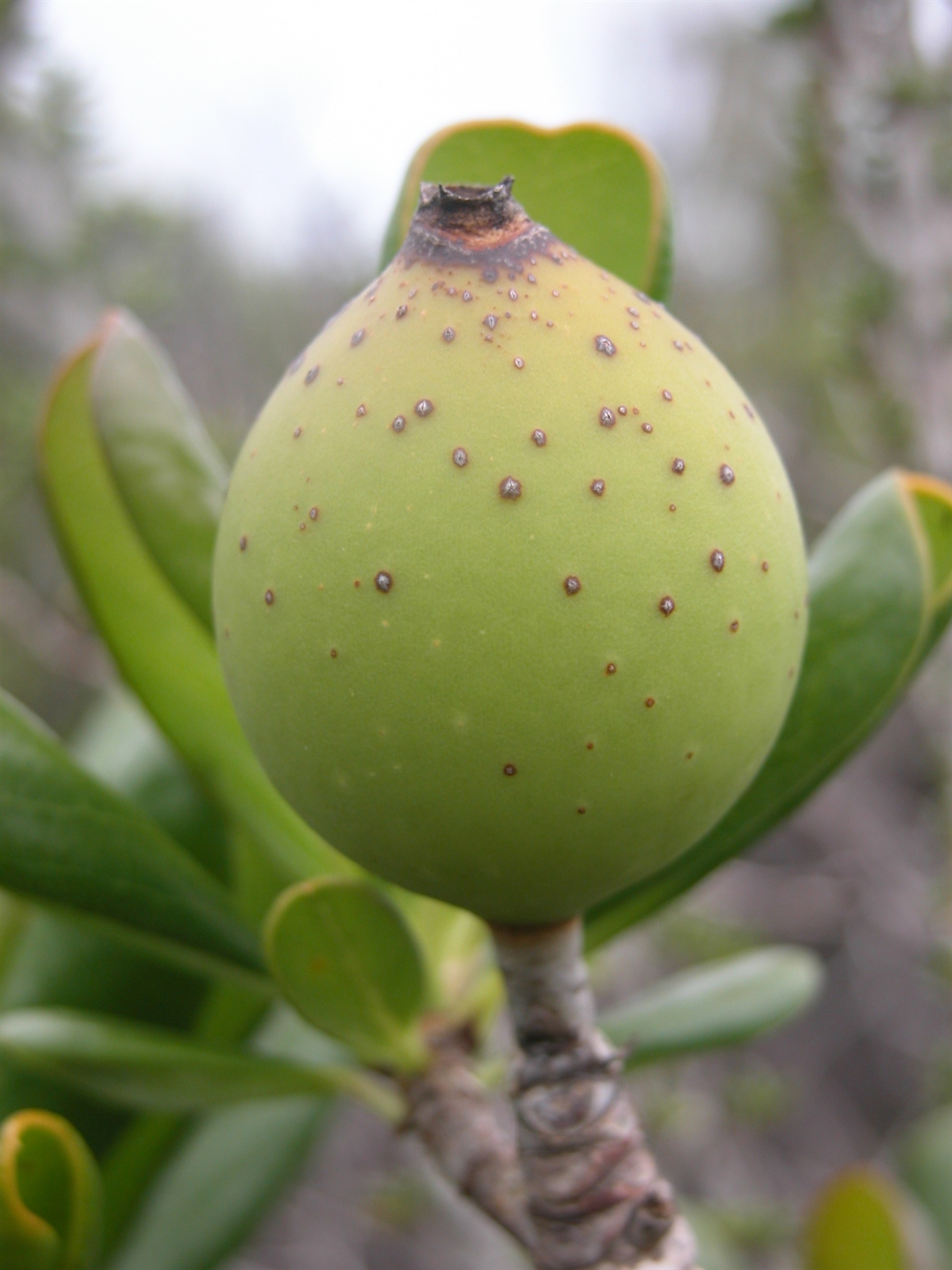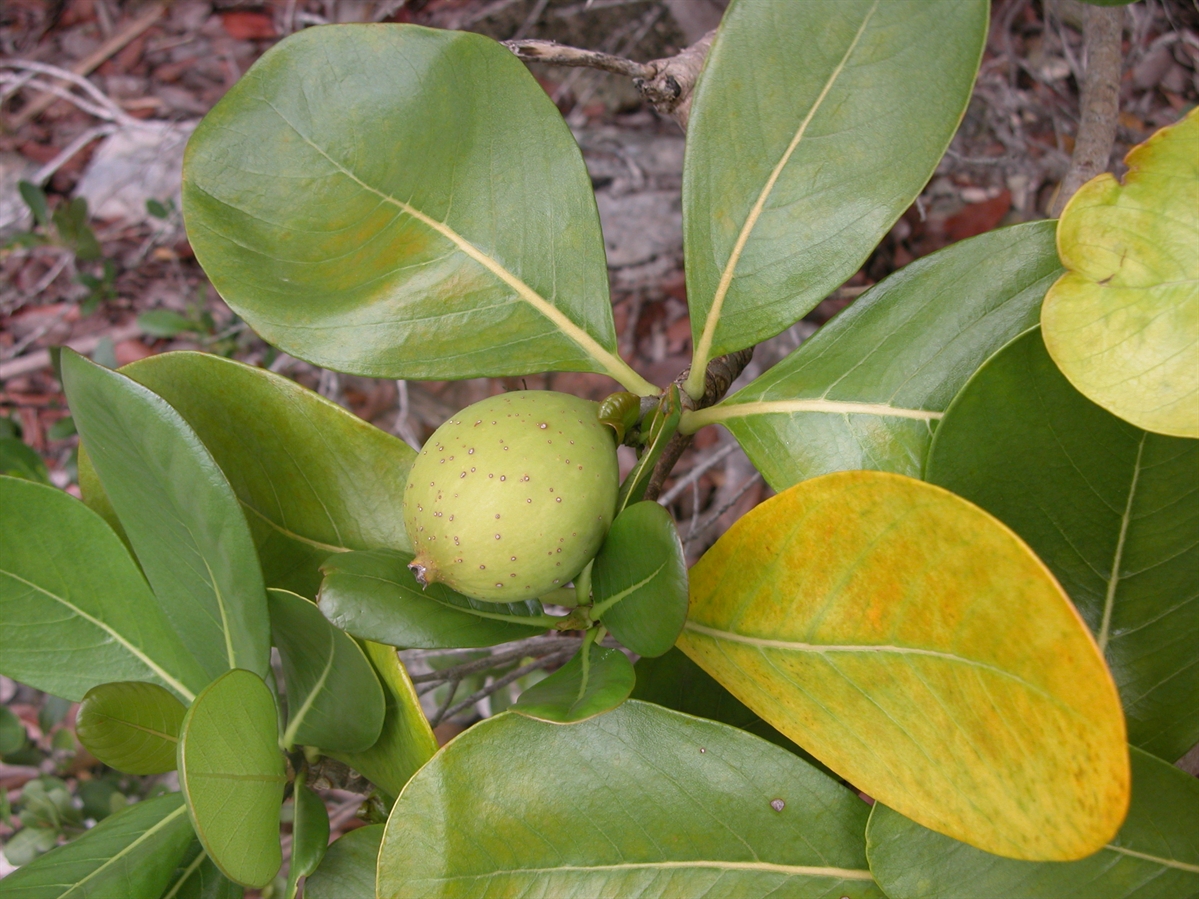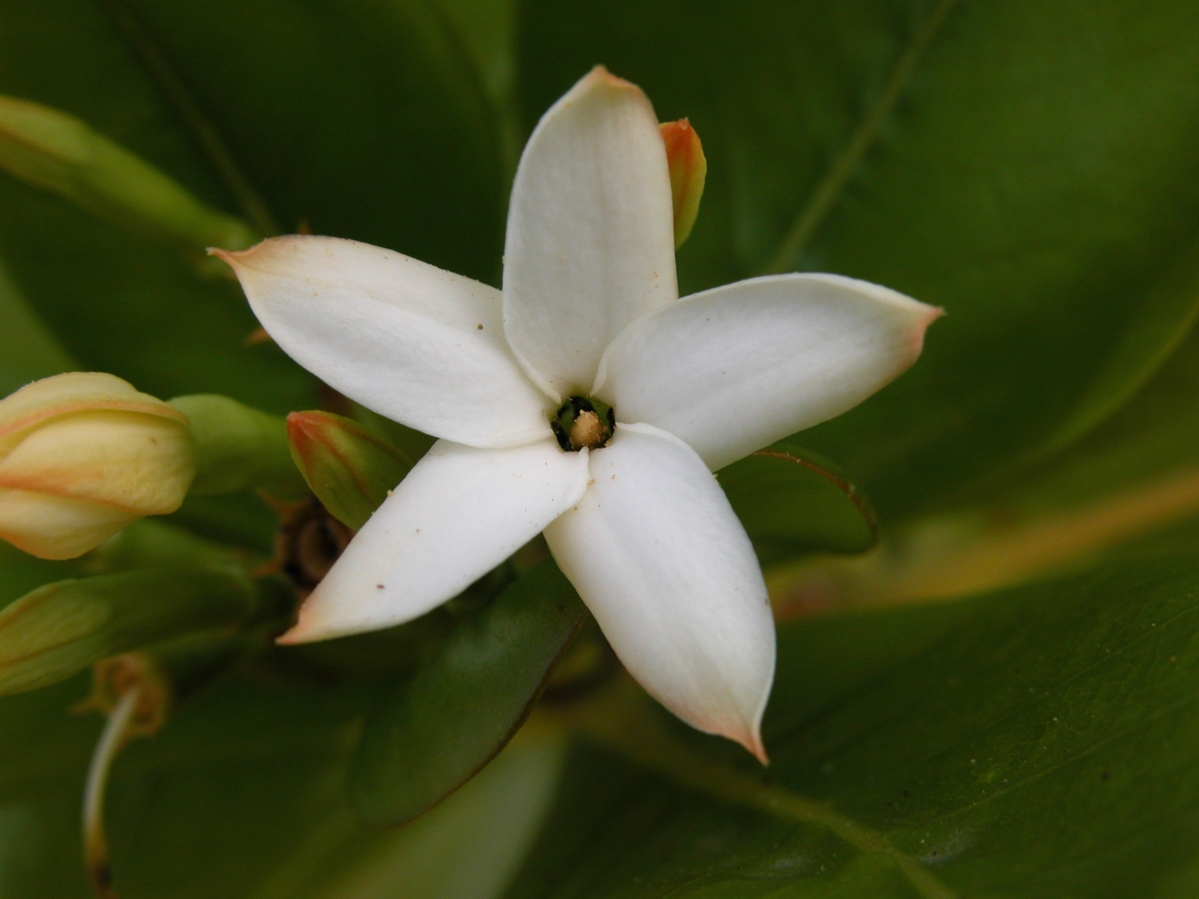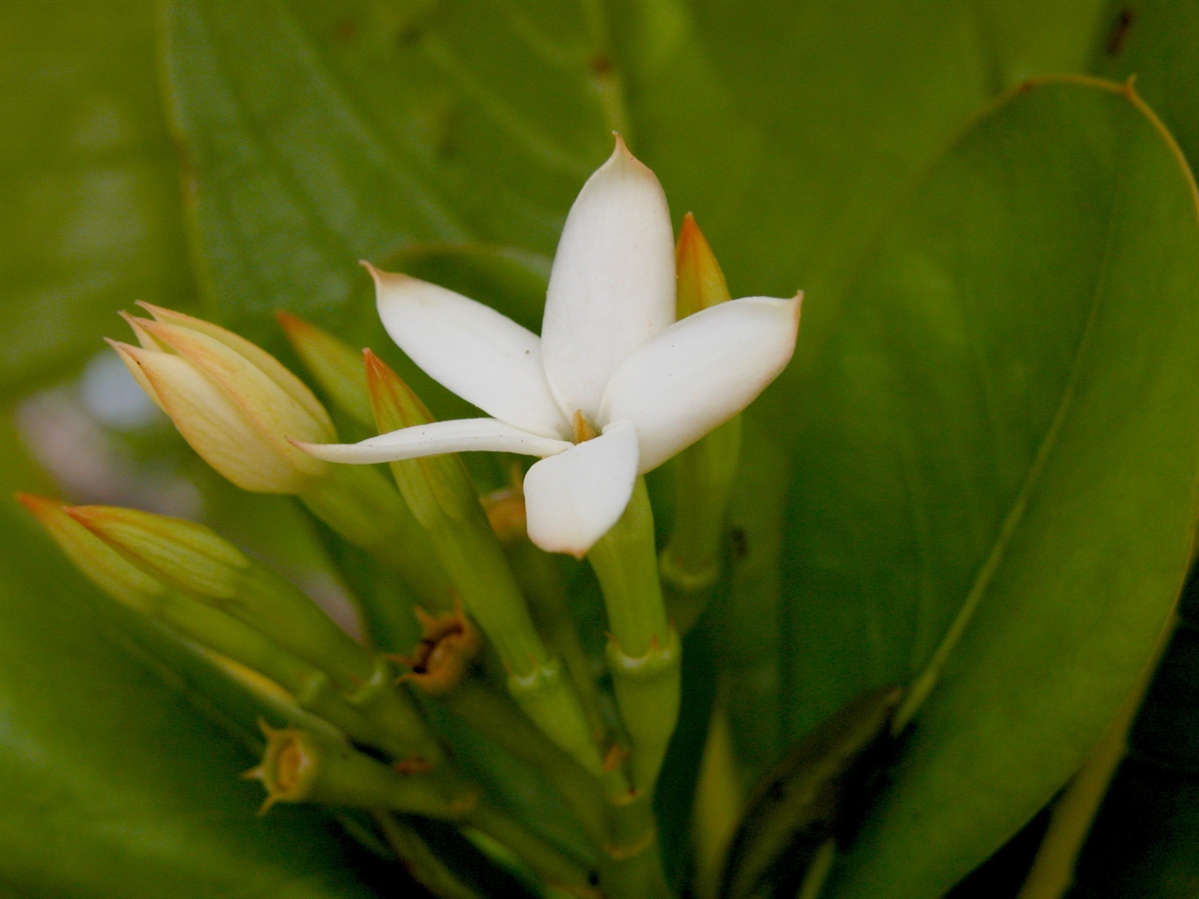Habit: Casasia clusiifolia grows as a medium shrub to 4 m in height. The leaves are arranged oppositely, to 20 cm in length, obovate with an entire margin. The leaf apex is rounded although sometimes slightly mucronate.
The complete, perfect, and actinomorphic flowers are monoecious and arranged in dense panicles. The flowers are fragrant. The calyx has 5 green sepals. The corolla has 5 white petals that are fused to form a salverform tube with a yellow center. The staminate flowers have 5-6 functional stamens fused to the base of the corolla and a nonfunctional ovary. The carpellate flowers have non-functional stamens and an inferior ovary with 1-2 locules and numerous seeds. The fruit is a berry that remains green through maturity turning yellow then dark brown black before the fruit drops off the shrub.
Habitat: Casasia clusiifolia grows in coastal areas of Dry Broadleaf Evergreen Formation –Shrubland (coastal scrubland) typically on a sand substrate. It can be found occasionally growing on a limestone substrate.
Distribution: Casasia clusiifolia occurs on all island groups in the Lucayan Archipelago as well as Florida, the entire Caribbean region, and Bermuda.
Medicinal/Cultural/Economic usage: Casasia clusiifolia has no known medicinal uses in the Lucayan Archipelago. It is used in the horticultural industry for its showy and very fragrant flowers and can grow in dry, salty environments.
The fruits are technically edible to humans but are not very tasty. They are eaten by Iguanas and reportedly by Hutia. The flowers are quite attractive to the Bahama Woodstar.




